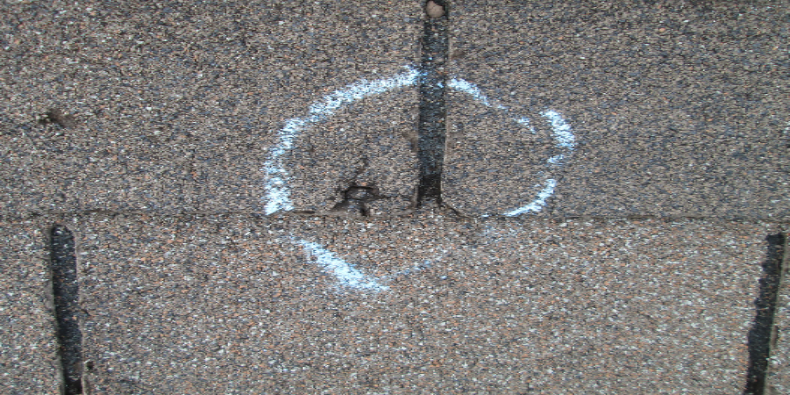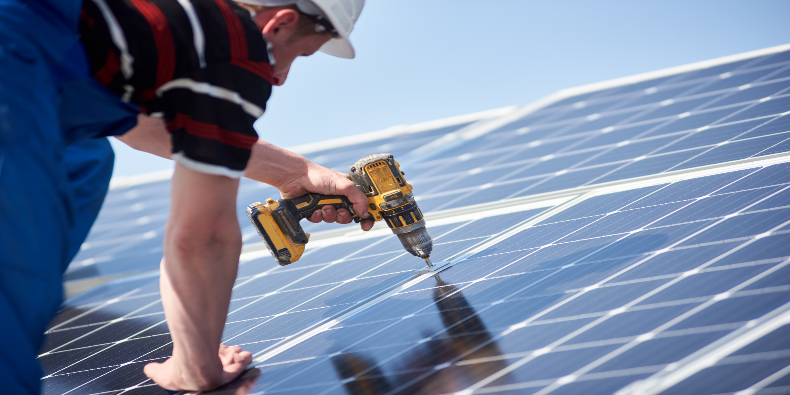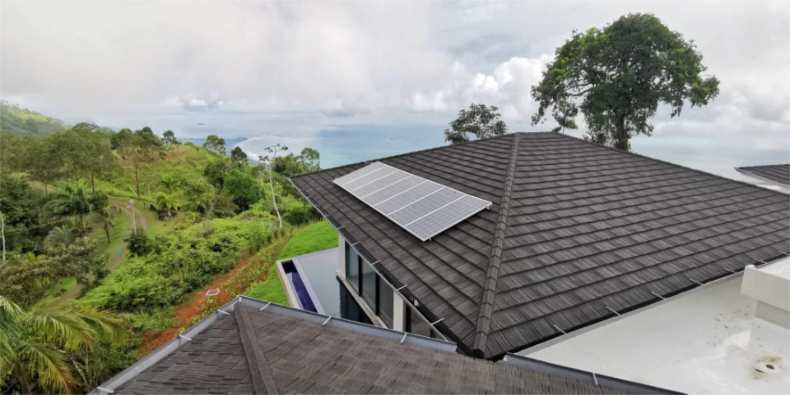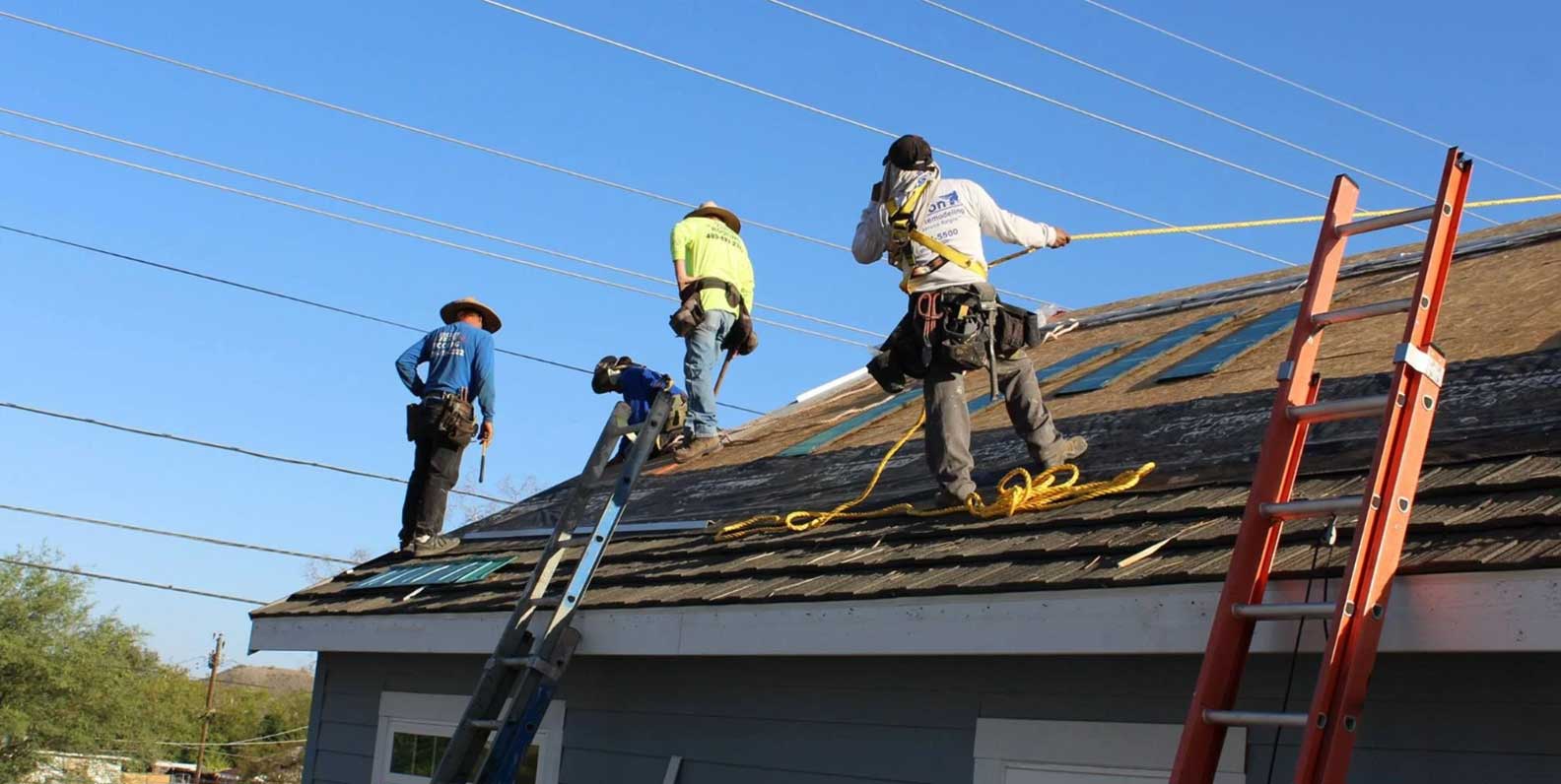Hail damage, even when it seems minor, can be costly. Homeowners in "Hail Alley," which includes Nebraska, Colorado, and Wyoming, are especially familiar with the risks, but hailstorms are a concern across many other states as well.
One of the biggest dangers of hail damage is that it often goes unnoticed. A small crack or leak might not seem urgent, but left unchecked can lead to thousands of dollars in repairs, particularly if moisture results in mold growth inside the home. In fact, hail-related property damage exceeds $1 billion annually, and that number continues to rise.
Whether it’s replacing a few shingles or repairing an entire section of the roof, homeowners spend anywhere from $375 to $7,500 on hail damage repairs.
Since hail damage presents differently depending on the roofing material, we’ll break down how to identify it across common roofing types–and what to look for in a hail-resistant roof.
How to Recognize Hail Damage on Your Roof
If a hailstorm has recently hit your area, inspecting your roof for damage is a smart move. Even minor roof damage can lead to leaks that compromise the decking, underlayment, and even the interior of your home. Here’s how to recognize hail damage on three of the most common roofing materials.
Hail Damage to Asphalt Shingles
Asphalt shingles are the most widely used roofing material in the U.S., covering about 75% of homes. However, they’re also highly susceptible to hail damage–especially older or lower-quality shingles. Shingles that have lost their protective granules are particularly vulnerable, making even small hailstones a potential threat.
When inspecting your asphalt shingle roof for hail damage, look for:
- Missing or Partially Missing Shingles: Strong winds and hail can dislodge them entirely.
- Shingles Loosened from their Adhesive Strips: These may appear lifted or no longer firmly attached.
- Cracks, Tears, or Dents in Individual Shingles: Hail impact can weaken or break shingles, reducing their lifespan.
- Warping, Cupping, or Fishmouthing: Shingles may curl at the edges, forming a distinct wavy appearance.
You may also notice discoloration in affected areas, where granules have been knocked off, exposing the underlying material. In severe cases, you might even see glimpses of the roof decking or underlayment where shingles have blown away or broken apart.

Hail Damage to Clay or Concrete Tiles
After a hailstorm, clay or concrete tile roofs can look like someone took a hammer to a pottery shop. These roofing materials are more brittle and fragile than others. Even walking on them can cause damage, so hail can be especially destructive.
After severe hail, look for:
- Chipped, Cracked, or Shattered Tiles: The impact of hail often creates fractures similar to broken pottery.
- Tiles that have Shifted, Slid, or Fallen Off: High winds and hail impact can dislodge them completely.
- Exposed Underlayment or Decking: Missing or damaged tiles may reveal the protective layers underneath, increasing the risk of leaks.
While clay and concrete tiles are popular in certain regions, hailstorms can leave them severely compromised, requiring prompt inspection and repairs.

Hail Damage to Wood Shakes or Shingles
Traditional wood shakes and shingles don’t just suffer from hail damage—constant exposure to moisture from rain and humidity can also weaken them over time. Once the wood becomes saturated or brittle, hail impact can easily lead to cracks, splits, and chips.
Signs of hail damage on wood shakes or shingles include:
- Splintering and Deep Cracks: Hailstones can cause sharp breaks along the grain of the wood.
- Shakes that are Missing or Dislodged: If loosened by prior wear, they can be knocked off completely.
- Increased Risk of Leaks: Heavy damage exposes the roof decking, making the home more vulnerable to water intrusion.
A hail-damaged wood roof can deteriorate quickly if left unrepaired, so it’s crucial to check for issues after a storm and take action to prevent further water damage.

Metal Roofing Offers Hail Resistance
Hail damage can be a major headache for homeowners, but with stone-coated metal roofing, you can avoid costly repairs and insurance complications.
All DECRA products carry the highest Underwriters Laboratories (UL) rating for hail impact resistance and are warrantied against damage from hailstones up to 2.5 inches in diameter.
Whether you live in Texas–which led the nation in hail incidents in 2024–Nebraska, Minnesota, or somewhere else prone to severe storms, DECRA gives you peace of mind that your roof is protected.
5 More Reasons to Choose DECRA Metal Roofing
While DECRA provides hail protection, its benefits go far beyond that. Unlike traditional materials such as asphalt shingles, clay tiles, or wood shakes, DECRA delivers a long-lasting solution for homeowners.
1. Wind Resistance
Hailstorms often come with intense winds, which can rip shingles from roofs and cause significant damage. DECRA is warrantied for winds up to 120 mph.
2. Protection from Wind-Driven Rain
High winds don’t just cause visible damage. They can also push rain into tiny gaps in a roof, leading to hidden leaks and costly water damage inside your home.
Every DECRA product meets the strict TAS-100 wind-driven rain test, a requirement for selling roofing in South Florida’s High-Velocity Hurricane Zones (HVHZ), one of the most hurricane-prone regions in the U.S.
3. High Fire Rating
Wildfires are no longer just a concern for the West Coast. Recent years have seen devastating fires across the Northeast and other unexpected regions.
DECRA is rated Class A–the highest fire resistance rating available. Unlike flammable roofing materials, DECRA does not ignite from embers or flames, offering critical protection against wildfires.
4. Built for Heavy Snow Loads
Ice dams, freezing temperatures and repeated freeze/thaw cycles can take a devastating toll on your roof. DECRA’s lightweight nature supports heavy snow loads without sagging. Its nonporous texture also helps snow and ice slide right off the roof before it can accumulate, preventing ice dams.
5. Long-Term Financial Advantages
Investing in a DECRA Metal Roof isn’t just about protection. It’s also a smart financial decision:
- Longer Lifespan: Metal roofing lasts two to three times longer than traditional roofing materials, meaning fewer replacements over time–a big cost savings.
- Lower Cooling Costs: By reflecting sunlight instead of absorbing it, metal roofing can lower cooling expenses by up to 25%.
- High ROI: Homeowners can recoup up to 85.9% of the installation cost of a metal roof.
- Increased Home Value: A metal roof can boost your home’s value by up to 6%, which is great for building equity or turning a sale profit.
- Insurance Discounts: Many insurance providers offer lower premiums for metal roofs due to their durability.
Match a DECRA Product to Your Home’s Style
No matter your home’s architectural style, DECRA offers a wide range of profiles to complement it. Whether you prefer the look of shingles, tiles, or shakes, DECRA provides strength without sacrificing style.
As spring approaches, now is the perfect time to inspect your roof for signs of wear and tear. Don’t wait until minor damage turns into a costly repair. Request a complimentary sample today and see firsthand why DECRA is chosen by millions of homeowners everywhere.
Editor’s Note: This blog was originally published in July 2022, but has been updated with relevant information.






